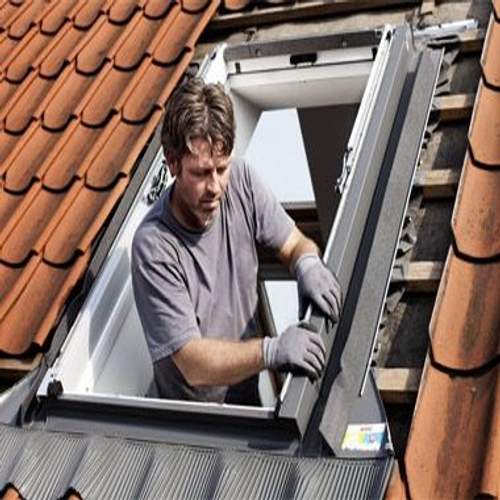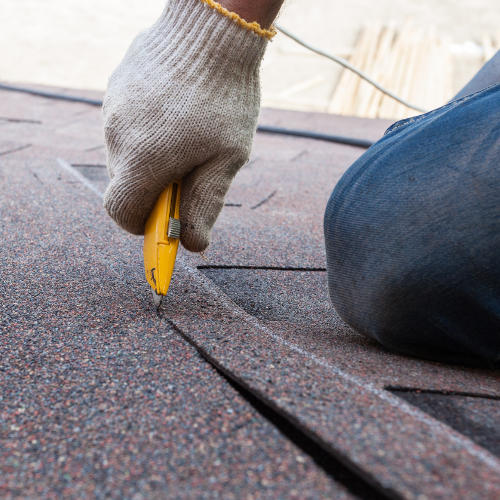Roof covering installation and assembly
Roof structure is usually called “roofing pie” and not without reason – indeed, any rooftop consists of several elements, which, sort of stratifying on every other, create strong safeguard for housing. Each of coating construction’s layers performs a unique designated role, whether that be moisture-proofing, noise insulation, or defense against heat loss. During roof’s installation it is very important pay particular awareness of the succession of coats to ensure effectiveness of their functions. Basic elements are:
– damp-proof membrane and vapor sealing pellicle;
– warmth-keeping lagging;
– protection against wind;
– roof-boarding material;
– ventilation arrangement;
– other components.
Roof installation implies creation of such a “pie”, which on the final stage is protected with cladding or thatching, and, if needed, is painted. Material selection to get the desired hermeticity and sturdiness is done with due regard to climate characteristics, building’s designation and architectural peculiarities, roof’s structure (flat or pitched). In addition, you should consider degree of loadings imposed by snow, winding and also other atmospheric phenomena.
Assembly of flat-deck and inclined roofs, other roofing activities require different approaches, equipment and appropriate expertise in installers. Consider expose take a look at different roofs’ specificities, and focus on such important operational aspects as repairing, maintenance and mounting of rainwater systems.
Top features of flat roofs installation
Flat roofs using a slope less than 2.5 degrees are arranged by way of fusion-bonded reel-fed materials or polymeric membranes. These stuffs are designed especially for terraced-roof option, customized in light of its profile, that offers them maximum protection against weathering, ultraviolet exposure, etc. Assembling rolled materials is accomplished by welding sheets of roll composition roofing using heat. Various mastics allow achieving waterproof membrane’s perfect impermeability.
Assembly of membranous rooftops is executed by attaching the information to roofing’s screed; membrane sheets are fastened between each other by hot-air welding method. Extruded heat retainers, mineral wool rigid insulants and expanded plastics are requested for flat-deck roofs’ winterization. Installation technologies and insulation’s options are driven by roofing type and loads intensity on it.
Pitch roof installation notes
Pitched roofs having a slope of above 8-12 degrees are enclosed in different roofing materials, among which the most common are clay roofing shingles, metal tile, profiled sheeting, flexible bituminous shingle and cement-sand tiles. In many instances selection of suitable option id driven by customer’s selections and size budget allotted for housetop arrangement.
Corrugated sheets and metal shingles are installed by laying on lathing and fastening with special self-drilling screws. Folded covering assembly requires the use of specialized equipment, where galvanized steel sheets are bonded in seams (single or double). Flexible bitumen tiles are laid on roof’s substructure, that is preliminary necessary to be carefully prepared – cleaned and dried. Mounting versatile bitumen plates is executed overlapping or on self-adhesive tile layer (in some instances – asphalt coating compound), or by way of nails. Types of slate are laid on prepared lathwork; shingles are attached using stating nails with rubber gasket and anticorrosion cap. Holes for nails in sheets of slate are drilled beforehand. Thermal insulation of inclined roofs, alluding to existence of loft (or mansard), is produced using fiberglass or mineral-based materials having density from 35 to 125 kg / cubic meter. Determined by whether attic or mansard will likely be arranged, heaters are attached across the slope or on ceiling slab respectively. Qualitative doing of conditions roofing weatherization can substantially reduce electricity consumption for heating and improve longevity of the whole roof structure.

Roof repair
Though installing performed by professionals ensures housetop’s trustability and it is primary function – protection against atmospheric precipitation, nevertheless ultimately absolutely essential of repair arises. Roof repair, irrespective of its type, is split into current and capital. Current repairing includes eliminating small defects in coating (cracks, bumps, depressurization of joints), of course, if necessary, elements’ partial replacement. Major overhaul implies replacing roofing material, comprising dismantling of old covering, restoration of roof top, setting up thermal insulation, installation of new coverage and painting (if necessary).
Timely conduction of current repairs allows to keep the rooftop in excellent condition with minimal resources and efforts. Permanent maintenance carried out by professionals is very important to detect and correct defects.
Roofing maintenance
In order to extend roofing’s service life and eliminate the dependence on major repairs, attendance is carried out, implying thorough inspection and reduction of existing defects. Different types of covering require individual approach and high professionalism. Examination ought to be done at least 2 times 12 months for timely detection of potential problems. Roofing service could also include roofing cleaning spillway chutes and pipes, sealing portions of roofing system, cleaning debris, ice and snow from the roof, painting elements that have lost their original appearance and many other activities.
Drainage systems arrangement
Organization of gutters is critical action in building any rooftop. For pitched roofs exterior drainage method is used, composed of pipes and gutters fabricated of metal or PVC. Properly organized water disposal shields facade and basement from premature destruction upon contact with moisture and, additionally, allows giving your house more finished attractive look.
Range of material and form of the drainage elements is dictated by customer’s funds as well as aesthetic preferences. Typically, installing PVC gutters is more affordable, but because of these properties to alter under influence of temperature, plastic pipes and gutters can cause leakages. Modern rainwater systems’ manufacturers for this specific purpose develop special sealants delivered with PVC gutters, which could significantly prolong their lifespan.
Copper cunettes are believed is the most durable, but other metallic watercourses also provide an excellent performance and may serve for years. “General Builder” also provides solutions for flat roofs, where internal runoff systems, including spillway funnels, pipes and connectors, are organized. Professionals’ participation is important for optimal calculation of load, imposed on drainage system. Works must be carried out with clear correspondence to requirements specified in regulatory documents, looking at structure’s slope, dimensions, and many additional factors.
To read more about commercial roofing albany ny you can check our web site.





